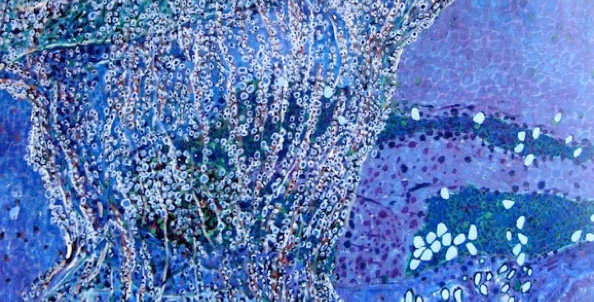Once, as a young man, I visited the great Korean artist Nam June Paik in his New York studio. The large floor was a chaotic landscape of half-finished paintings, digital hardware for use in his installations, and heaps of all sorts of materials.

During our conversation he carelessly walked over the canvases with shoes on, kicking a small robotic device that was in his way. This was works that would be sold for thousands of dollars to collectors and museums around the world. I was reverent and tried – I am not sure how succesfully – to move lightly like a ballet dancer among the emerging masterpieces. Paik smiled at my efforts and amazement, and said, “If you are going to produce art, the worst thing is too much respect for what you are doing. That can make the works boring and their expression lifeless. You need to be courageous and disrespectful when you work! Seize the freedom of creation! It is with this freedom that you infect others when they look at your things “
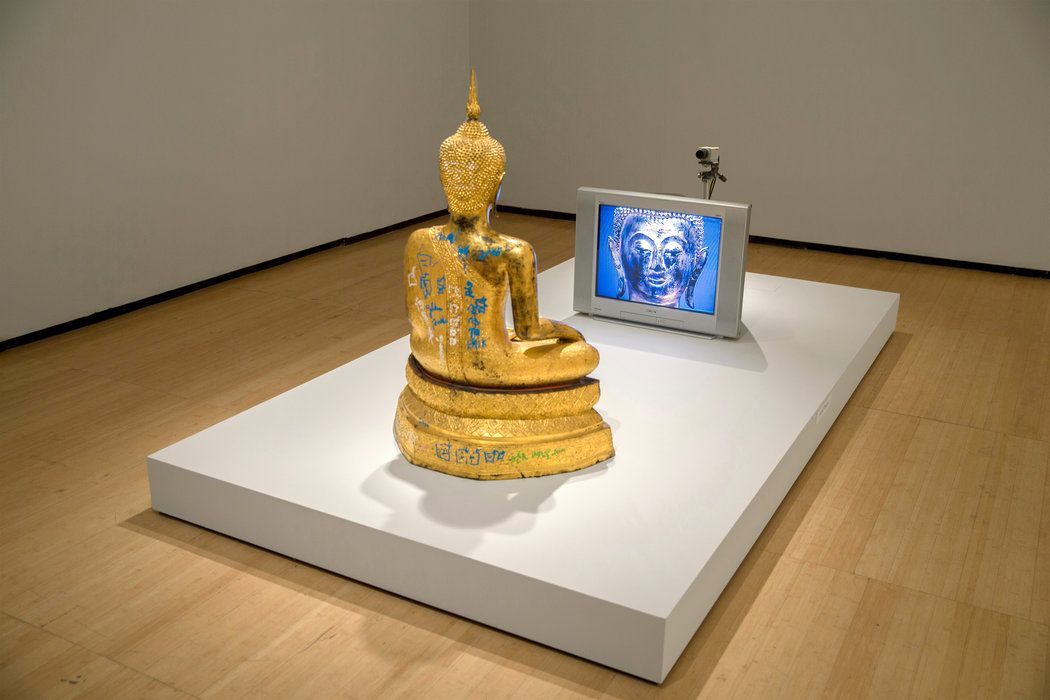
A few days later I visited another art icon of the time, Julian Schnabel. He had a huge two floor studio in the heart of Manhattan, in which he generously showed me and my friends around. Everything was big and very American around this man. At one point he wanted to show us how he painted. He had an assistant get a ladder and place it next to a canvas he was working on – a huge one, probably 5 x 5 meters. Schnabel then opened a Budweiser, took a towel hanging on the wall and dipped it into a large bucket of paint. Balancing with beer in one hand, paint dripping towel in the other, he climbed the ladder. Then he turned to us and said, “You know, Art is easy, look!”, and then threw the fabric with full force onto the canvas in an explosion of color. I later recognized the painting in an international art magazine. The big explosion was still there. The painting was pretty cool.
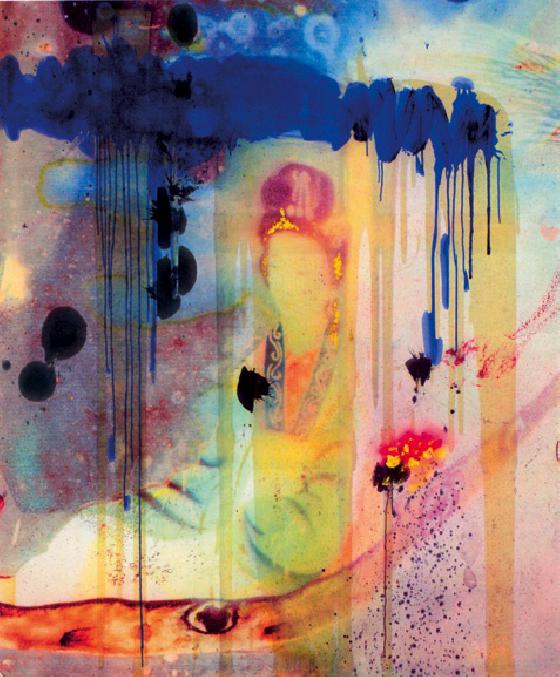
How to be infected with Muses so one can can infect others?
Creating is not just about disrespect of norms and absence of constraints. Without a constant listening into what happens on the canvas, and what the emerging painting whispers back wordlessly, no poetry arises. Therefore, as I experience it, the ability to listen is key. One must be able to listen into the wordless resonance between work and artist.
But listen for what? And what is the nature of this inspiration that has so often been met in the image of mythological beings on the verge of the human realm? Where does it come from? What is it that makes a work art and not just an illustration of an idea or art theory? As an artist, I can’t simply count on the Muses to always breathe their sweet breeze upon me. I need to show them trust and courage to let go of well known supporting handrails along the stairs. This way, months of work on a canvas can be lost in seconds. I need to let go of the expected and well known – the solutions and expressions I am familiar and comfortable with. When I dare walk into the unknown land of mists without fear, it is my experience that the Muses are much more generous with appearing. At this place – a magical place, as I experience it – a work can suddenly, lightly, effortlessly come together into one whole. It is as if the work – and not I – has been knowing all along what its final complete expression was.
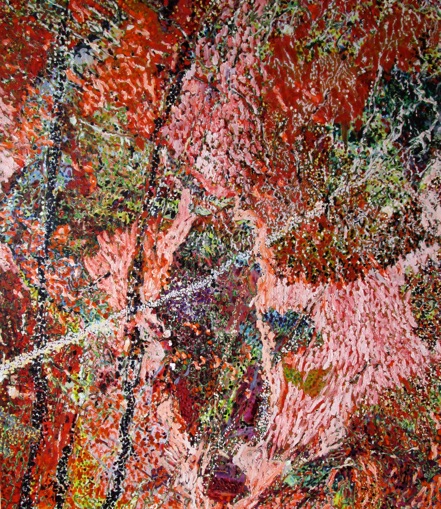
Western art history is very much a long sequence of breaks in which new art ideologies overturned their predecessors in an eternal desire for new territories and white spots on the artistic map. At the same time, all these art languages have been built out of blocks of other layers of art language. Again and again, the new order emerging from overthrowing an old order, is really something tha tcan only be appreciated or understood on the basis of previous orders. The viewer will not be able to experience a modern piece of artwork if he or she does not have a modern visual language and and gaze. We look and experience through the explicit or implicit references we have been trained with.
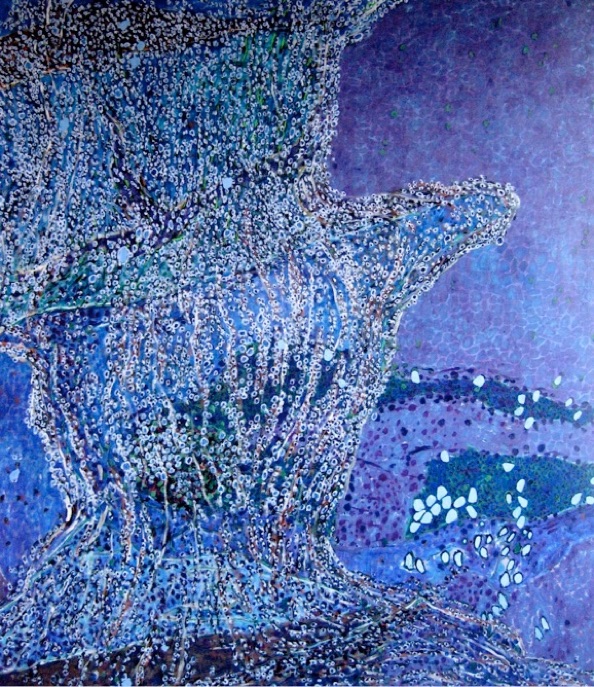
So History – personal, cultural – is there in creating as well as viewing. But fortunately it is not the only thing in play. If it was, all artistic experience would only be about pattern recognition, liking only what confirms (or provokes) patterns we know. But there is also the Cosmos, the Unknown. The Space that is simple, obvious, concrete and familiar, and at the same time radically unknown. From this place, the Muses dance and laugh, effortlessly bypassing and streaming around the props of language and conventions.
The Dutch painter Bram van Welde talked about how he lost himself in this moment of inspiration into the unknown, where everything disappears and something new comes in wordless. But getting to this unknown space is not something I can plan as a painter. I can have different strategies to open it up, but there is no sure method for it to actually happen. There is no connection between cause and effect here.
I find that this moment has to do with being “gone” … and yet there is seeing and creating. There is nothing in that inner space at that moment. All furnitures of known language, all the carpets and family photos of art language are gone in that moment. Precisely this moment is the real form of the Muses. The magical creation point of freedom. This sounds grandiose and dramatic, but that’s not what it’s like at all. It is straightforward, simple, unpretentious, almost like a child playing and getting lost in play without agendas. In that moment there is a breath of happiness, soft whisper or loud roar.
Probably because Happiness and Freedom are lovers, walking hand in hand on the canvas with big dusty Olympian boots on, playfully kicking a robot to life here and there.
Carsten von Würden www.carstenvonwurden.com
